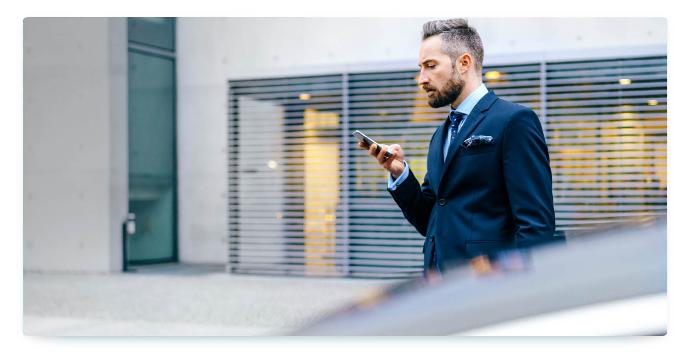For shared mobility services to be successful in the long term, they often need more than just a broad user base - for example, so-called anchor customers. This is because anchor customers make a decisive contribution to the stability and predictability of sales. In this article, you will find out why this is the case and how you can attract anchor customers for your service.
What are anchor customers?
Anchor customers are customers who use your service regularly and reliably - with or without fixed contractual agreements. In the area of shared mobility, these are usually organizations, companies, associations or municipal offices.
After all, many larger organizations have a constant need for business trips. By using an existing sharing service, they can replace an internal fleet or company cars for employees and instead have flexible access to vehicles when they are needed.
Tip
The best anchor customers are companies or offices that have regular external appointments but do not need to transport a heavy load. Monument offices, for example, are better suited than facility management services.
You place one or more of your vehicles at the anchor customers' locations so that employees can access them (possibly exclusively) during working hours. After work or on weekends and public holidays, the vehicles can also be made accessible to the general public.
Another option is to offer anchor customers access to your vehicles at existing locations via special rates and conditions. Employees book the vehicles for business trips via your app, while billing takes place directly via the company. The company can also provide its employees with a budget for private journeys as part of employee benefits.

Advantages of anchor customers for sharing providers
Anchor customers increase the utilization of your vehicles and ensure a regular, predictable turnover. In this way, you as the operator of the sharing service make a major contribution to the stability of your business model.
The loyalty of anchor customers to your service ensures your long-term success and in many cases makes a sharing model economically viable.
An additional effect is created by network effects and word of mouth. Larger companies and municipal institutions enjoy an advantage of trust in their region. If employees of these organizations drive their vehicles to appointments, this sends a message to the outside world.
This results in a positive marketing effect for you: anchor customers attract potential new users and make your sharing service better known.
Example: Anchor customers for sharing in the countryside
The smarna project in North Friesland makes targeted use of anchor customers to establish the sharing service in the region.
A test run will continue until the end of 2024, funded by the Federal Ministry for the Environment, Nature Conservation, Nuclear Safety and Consumer Protection (BMUV). In the meantime, a smarna-Mobil is already available at the DIAKO NF and Nordfriesland church district sites for employees to use for business trips. Private individuals can also rent the car outside of business hours.
Once the funding has expired, further employers in the region are to be acquired as anchor customers so that the sharing service can continue to operate economically.
Attract and retain anchor customers
To convince potential anchor customers, you need to make them understand the benefits of your sharing offer. These could be the following, for example:
Social and ecological responsibility: car sharing and bike sharing reduce the number of vehicles needed, which saves resources.
At the same time, fewer parking spaces are required for private vehicles at the company's premises.
The costs of using the sharing service are very likely to be lower than for a company-owned fleet.
Since you, as the operator of the sharing offer, take over the fleet management, there is hardly any administrative work for the anchor customers.
It can also be helpful to offer personalized incentives. This can take the form of special conditions such as discounted usage tariffs, for example.
The challenge for you is to find a balance between attractive prices for anchor customers on the one hand and economic sustainability for you on the other.
Case Study Mainova:
Financial predictability through corporate sharing
With Hop-On, Mainova operates a pure anchor customer business in the form of exclusive sharing offers at company locations. In addition to predictable sales, the advantages also include a lower fraud and damage rate.
In our case study you will learn:
how corporate sharing works at Mainova
whereby this use case leads to financial stability
why there are fewer cases of fraud in corporate sharing
which features of the MOQO platform support the use case

Conclusion: Anchor tenants ensure economic security
Covering costs or even operating profitably remains a challenge for many shared mobility providers. It is important to find ways that lead to stable and predictable sales.
Anchor customers can play an important role here: Many companies and organizations will always have a need for mobility, but often do not necessarily need their own vehicles. This is where you can fill a gap with your sharing offer.




